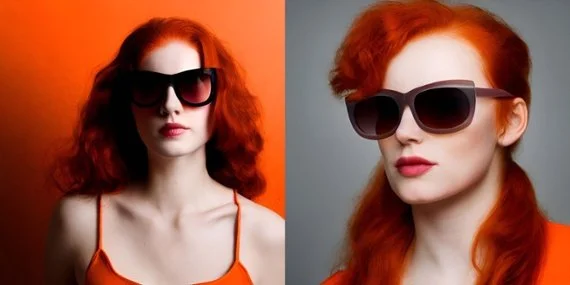Is A.I. good for photography?
I have recently seen a number of discussions on-line and in print regarding the role A.I. (Artificial Intelligence) plays in today’s photography world. I am sure many of us have opinions on this, and infact some others may not even know what influence it has on their life. This is how I see it.
My first camera was a “Diana F”. it cost me nothing as I got it by sending away Sports biscuit wrappers. It was basically a plastic box with a plastic lens and a spring leaf shutter. It took 120 size film and produced twelve square black and white images. Exposure was up to the photographer by selecting the appropriate symbol from cloudy to sunny and there were two shutter speeds normal and bulb. It was photography in its raw state. I then progressed on to the “Zenith E” which was a major step up and the camera had a basic light meter on it but the photographer still had to set the controls manually. I enjoyed using this camera and many of the archive shots in my portfolio sections were taken with this camera.
By the 1980s electronic miniaturisation meant that features were being added to cameras like through the lens metering and exposure programs like aperture and shutter speed priority. A few other cameras followed but I always wanted spot metering and finally got it when I purchased the Ricoh XR-X. This was to be my final film camera and it was time to go digital. Learning photography on basic equipment was something I will always be grateful for as much of the experience I have comes from those days. The concept of A.I. was not even discussed except maybe by people like Arthur C Clark and other such visionaries. Although the contemporary cameras of the day were bristling with electronics they were still “dumb” in the sense that the photographer had a big say in what and how the photograph was captured.
Fast forward 40 years or so and we now have cameras that will do much of the thinking for us using A.I. algorithms. The computing power of digital cameras (and some DSLRs for that matter) is phenomenal. No more lining up the subjects eye in the viewfinder to make sure it was perfectly in focus by using split screens or other such mechanical aids, today’s cameras will view the scene and identify faces and focus on the eye automatically, moving with the subject if they move. They can also determine the environment you are shooting in and adjust the camera settings to set shallow depth of field if you are taking a portrait making the background out of focus. Similarly if it sees you are taking landscapes it will set the camera to minimum aperture to ensure everything is in focus. And these are some of the basic functions that A.I. can influence. By the application of machine learning, the A.I. side of your camera will be watching what settings you are adjusting and learning how you like to take photos. It seems that these days every new camera launch ratchets up the application of A.I.
But what about post processing software? We have known for years that Adobe Photoshop can do things way beyond our imagination, but even these applications and others like Lightroom and Capture One are doing things now that are amazing. The latest release of Adobe Lightroom now allows some complex masking to take place similar to dodging and burning in a darkroom. By selecting “Sky” for example the software will read the image and identify the sky, segregating it for selective editing. The same for subject. Alright its not perfect, but its the software deciding not the user.
As a photographer I will always want to be in control but I can fully appreciate where some of the A.I features will appeal, and anything that attracts people to taking honest photographs is always good. Where it started to get a bit much for me was in an example of where A.I. was heading for photography in general. I recently watched a blog video by Tomasz Trzebiatowski of Frames Magazine on this very topic. In the video he outlines a scenario that is possible today through the application of A.I.. He discusses in the blog that there is software out there that allows anyone to create an image without ever using a camera and he gave this example. He asked the software to provide him with a photo of Seoul on a rainy day, at night, it’s in a busy street and with lots of well off and less well off people in the image. After waiting a couple of minutes the software produced an image (not photograph) of Seoul showing the criteria he had requested. That to me is not photography, but it’s show where things could be heading.

